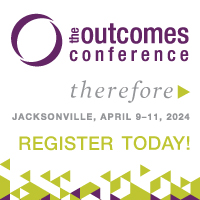
10 Keys to a Strong Nonprofit Organization by Tom Okarma
By Tom Okarma
While all ministries are different from one another and have their own unique characteristics, the ones that consistently impact their chosen niches in a positive way and generate successful outcomes are those performing well in several common, important areas. They may not be “best in class” candidates in any of them but that’s not really necessary.
What is necessary is a ministry taking tangible steps towards continuous improvement in each area, recognizing that some areas will improve quicker than others based on the specifics characteristics of the ministry. And the powerful thing about these areas is they apply to every ministry regardless of size, area of concentration, location, etc. This makes the sharing of best practices among ministries all the more logical and powerful.
Here are 10 keys to a strong nonprofit organization:
- Using a proactive approach to source and actively recruit director candidates whose skills, expertise, or network effectively fit the ministry’s strategic direction and the board’s needs to provide effective governance in the future. While wisdom and discernment are skills every board needs, other ones may also come into play and should not be ignored when filing board positions.
- Creating and delivering effective new board member orientation and annual board refresher training. As the new people on the team, new directors often sit quietly in meetings for their first six months on the board because they are unclear on what is expected of them or how things are done there. They may not understand specifically why they were recruited or what was expected of them while serving. A robust new director board orientation program helps shorten a director’s learning curve and empower them to become meaningfully engaged sooner, paying huge dividends quickly.
- Leading productive and well-paced board and committee meetings. Most directors have full-time jobs and know what good (and bad) meetings look like. Out of respect for them, meetings should be focused, brisk, and have “meaty”, actionable agendas providing for spirited, high-level discussions. This is not the place to debate the color of napkins for the upcoming gala!
- Encouraging board members to be as actively engaged, as they are able. Directors are there to work and contribute. If they are not engaged and challenged, the good ones will probably leave. High value directors are always being recruited onto other boards (just like you recruited them) so know that if they feel they are not being given opportunities to contribute in a significant way, other than just financially, they may well leave and join another board.
- Developing a clear strategic direction and cultivating a bias towards action. Some organizations develop an Execution Plan to accompany its Strategic Plan.
- Encouraging, even insisting on open and frank communication. Many problems can be avoided if the key players just sat down and spoke truth to each other early one when a problem arises.
- Promoting a culture of responsibility and accountability. Too often, nonprofits excuse someone’s poor behavior and just let the offender off the hook, which is a great way to lose key directors and staff who then have to pick up the slack caused by someone else.
- Administering a comprehensive volunteer orientation and training program that engages and empowers
- Delegating authority to others and empowering them to be the best they can be in carrying out their ministry duties.
- Conducting annual individual performance reviews and assessments of the board, each director, and the organization as a whole. People want to know how they are doing and how they can improve. This may be the most overlooked practice of them all.
Rather than becoming overwhelmed and trying to excel in all of these areas at once, your ministry may significantly increase its impact by focusing on just one or two of these areas at a time.
Which two should you recommend to your board?
####
Tom Okarma is the Founder of Vantage Point and has been a successful leader in both the nonprofit and business worlds and has led or served on a variety of boards. He’s been there, done that, and learned critical lessons about successful board development and governance. Today’s post is from his new book, Break Through The Ick Factors of Nonprofit Leadership: Discover your organization’s true potential.
Tom will be leading a workshop at The Outcomes Conference: CLA Dallas 2015: Building Boards For Kingdom Impact. Be sure to register for the conference and check out his workshop in the Board Governance Track. If you are a CLA member, then you get one registration FREE when you register four people at the same time. A great reason to bring the entire team!

What is Christian Leadership Alliance?
Christian Leadership Alliance equips and unites leaders to transform the world for Christ. We are the leaders of Christ-centered organizations who are dedicated to faithful stewardship for greater kingdom impact.
Sign up for FREE blog updates.
Upcoming Events
Check back later!





